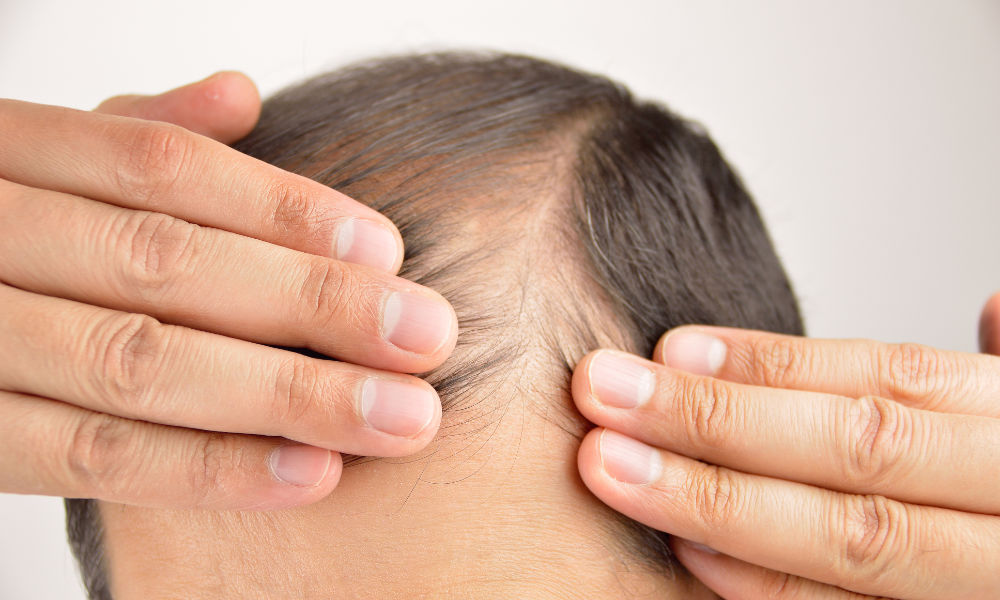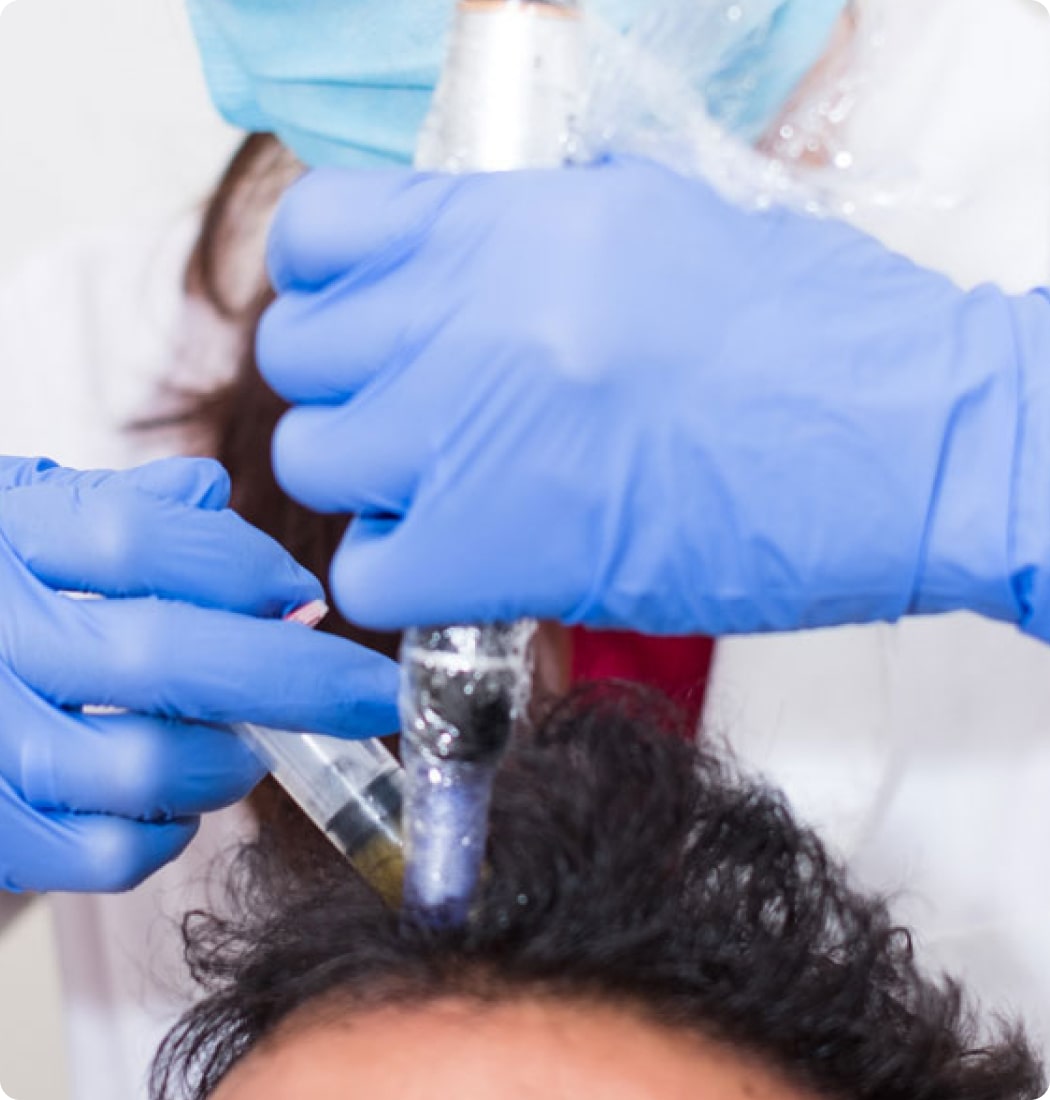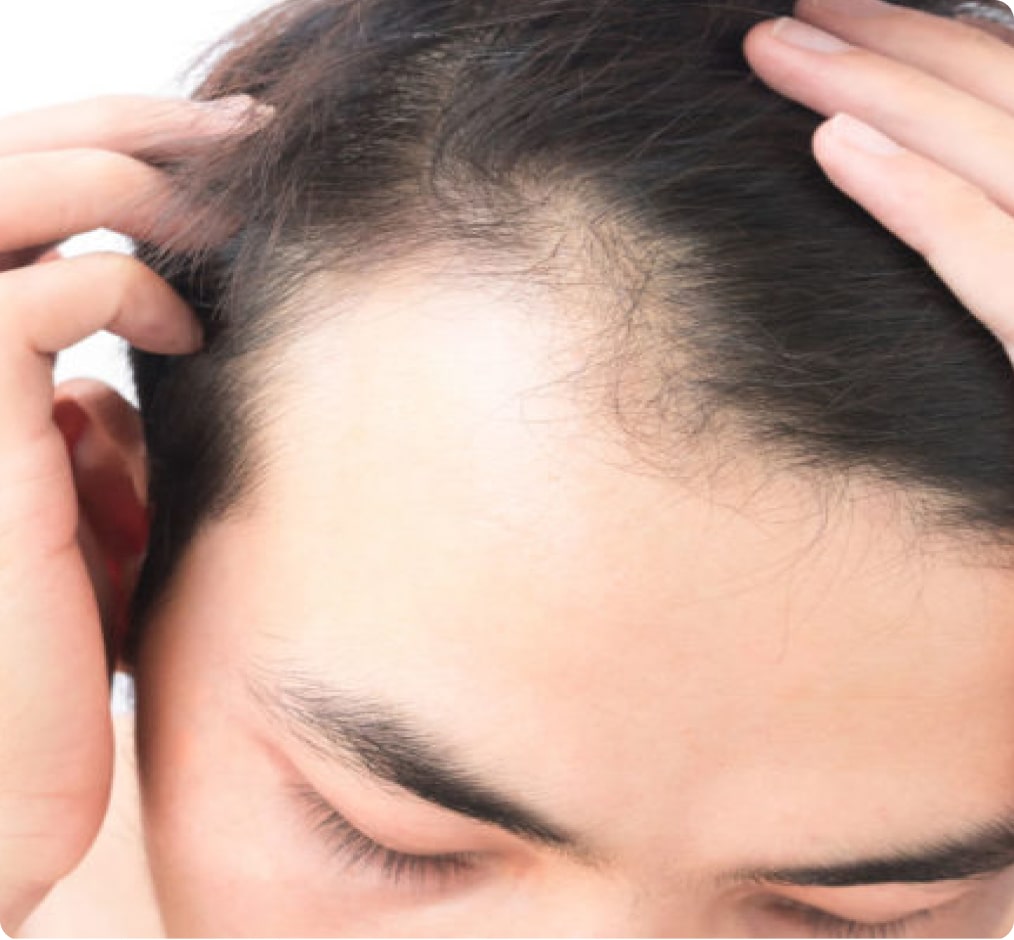More than 50% of males may experience some level of hair loss by age 50. By the time they’re 70, four out of five men may have bald spots or a receding hairline if they’re not completely bald. Male PRP hair regrowth treatment involves using a fine needle to inject and micro-needle thinning areas on your scalp with your own plasma-rich platelets. PRP hair regrowth can be a natural hair regrowth solution.
Procedure time: 30 mins
No. Treatments Required:
6 Sessions for an Improvement
Disclaimer: We are all unique. This means that treatment plans, the results, down time and recovery following treatment will vary from patient to patient. The information presented on this website should be used as a guide only.
We strongly recommend patients check if their PRP provider performing the PRP hair or skin treatment is performed at a minimum by a registered nurse. Registered nurses are trained in patient safety and hygiene protocols.
We also recommend patients confirm if an Australian medical doctor has contributed to the treatment protocols.
Hormones and genetic makeup can be the main cause of male pattern baldness or hair loss and thinning in men. An unhealthy lifestyle and stress can exacerbate the issue.
A majority of men with hair loss and thinning can blame their genes. Male pattern baldness can run in families. You may have heard that hair loss comes from the maternal line. However, males whose fathers are bald may have a higher chance of inheriting the hair loss than those whose fathers have a full head of hair.
Your hormones can also change as you age. The fluctuation can make the hair follicles shrink. When this happens, the follicle can produce thinner hair with less pigment. If your hair has become softer and finer, you may be experiencing male pattern baldness.
Medical problems can trigger hair loss. So can some medications that men take for hypertension, arthritis, cancer, depression and cardiac problems.
Your diet can influence your hair follicles too. Low iron and protein levels may lead to hair loss and thinning men.

Most men usually develop predictable patterns of hair loss. The strands at the top of the forehead may become thinner and sparser. The hairline may recede at the temples. Some men may also get a bald spot that grows at the crown of the head.
If you develop small bare batches relatively quickly, your hair loss could be caused by something different than male pattern baldness. Autoimmune conditions, infections and even a sudden shock could make your hair fall out.
There are many options available for managing hair loss. Hair transplants involve surgery, and topical products don’t always work on their own.
PRP, or platelet-rich plasma, therapy can be used to regrow hair naturally. The procedure is minimally invasive and shouldn’t be uncomfortable. It involves drawing a small amount of your blood, separating the plasma from it and injecting your hair follicles with the PRP.
Cosmetic nurses work methodically to place the injections exactly where they need to go combined with micro-needling the entire scalp. Doing this can boost circulation in the scalp and may infuse it with growth factors that can nourish the follicles and help them function optimally again.
While PRP hair loss treatment isn’t effective for men who are completely bald, it can make a dramatic difference for those with thinning areas or bald patches. Our registered nurses can evaluate you to determine whether you’re a good candidate for the procedure.
Without a professional hair loss treatment for hair restoration, male pattern baldness and any other type of hair loss are often permanent.
At the Hair and Skin Science hair loss clinic, we offer a hair health check and platelet-rich plasma (PRP) hair loss therapy to revive hair follicles and ensure male hair regrowth. Whether you suffer from male pattern hair loss, hair follicle inflammation, or thinning hair, PRP is a pain-free and effective alternative to hair transplantation.
Our PRP Sydney, Melbourne and Brisbane hair loss treatments are suitable for hair thinning and hair loss in men and women. This treatment takes place in several steps. First, the hair loss specialist draws blood from your arm and process it in a centrifuge, where gravity forms a separation between the red blood cells and plasma, which contains a high concentration of platelets.
With micro-needling, we inject the plasma into the scalp where balding or thinning occurs. After injection, the platelets improve blood supply to the hair follicles, activating hair growth, and increasing hair density. The platelets also prolong the hairs’ growth stage.
To learn more about this safe and natural treatment, complete our contact form by providing your name, email, and phone number.
At Hair And Skin Science, we provide a number of treatments that are effective at treating hair loss & thinning in men.

PRP, Platelet Rich Plasma, hair loss treatment is an innovative method to help treat hair loss without surgery, chemicals or medication. It can help slow down and even reverse hair loss in men and women.
Platelet rich plasma contains growth factors used by the body to regenerate cells and is extracted from your blood. We take a sample of blood, like with a blood test and separate it into its constituent parts. We extract the platelet rich plasma and use the growth factors contained within it to help stimulate the hair follicles.
We then use a microneedler to inject the platelet rich plasma into your scalp to help encourage the hair follicles to regenerate. PRP hair loss treatment can help with genetic hair loss, pattern baldness, hair loss in men, hair loss in women, hair thinning, stress-related hair loss and alopecia. It’s a quick and relatively painless procedure that takes less than an hour.

PRF hair treatments can tackle the majority of conditions experienced by men. That includes male pattern baldness, stress-related hair loss, hair thinning and chronic conditions that result in hair loss. PRF is considered the second generation to PRP.
With PRF there is no anticoagulant in the tube that the blood is collected, the plasma actually forms a platelet and white blood cell-rich fibrin scaffold once injected into the treatment area.
The fibrin clot can allow for a much slower and longer release of the growth factors and cytokines – in other words, PRF treatment can continue to release more growth factors over time, even after your treatment is completed.
Our registered nurses perform over 100,000 treatments every year. Visit one of our clinics Australia wide. Conveniently located in Sydney, Melbourne, Brisbane, Gold Coast, Sunshine Coast, Perth, Canberra & Adelaide.